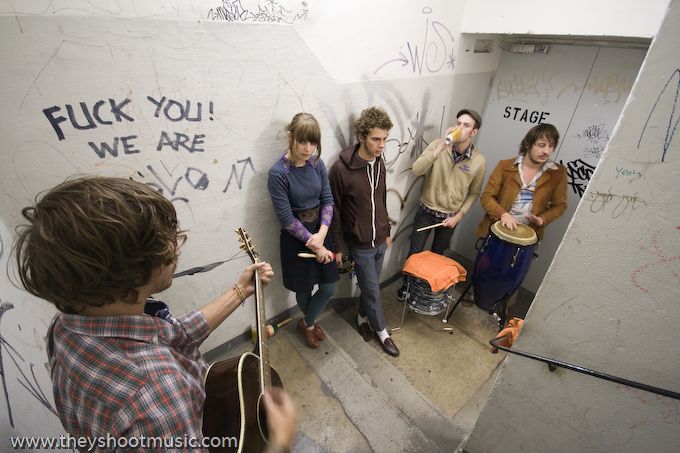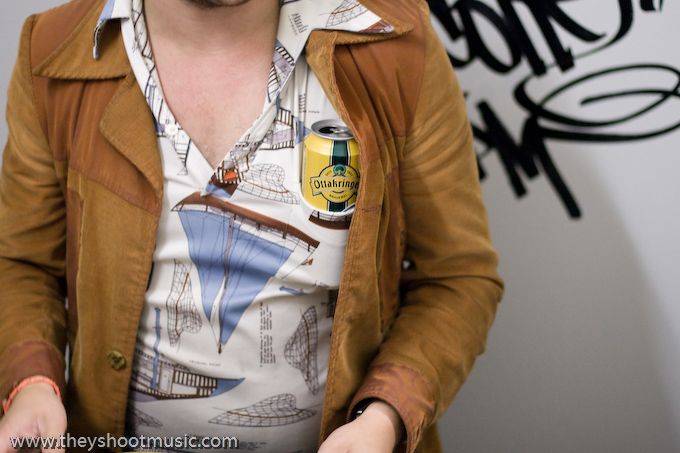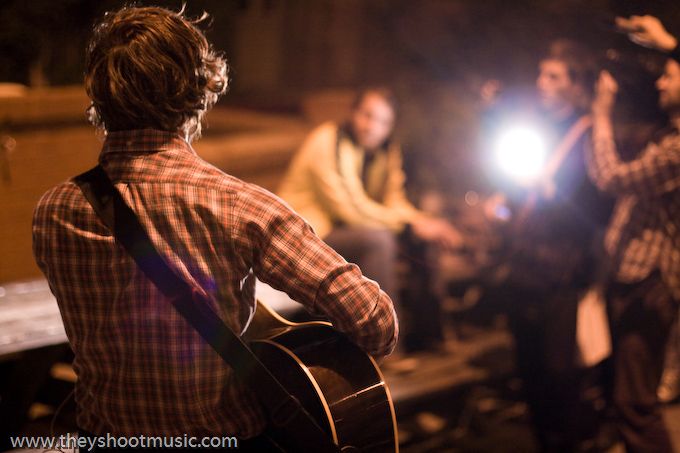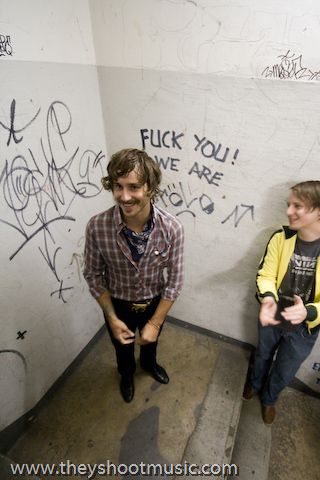Portugal. The Man
WUK, 2008
The more songs they played, the more people were around – clapping, screaming, partying. It seemed like Portugal. The Man just wouldn’t stop performing on this Thursday evening at the WUK. Even numerous interviews they had to give and an enthusiastically acclaimed show seemed not to cause the slightest lack of energy as the Alaska-native and now Portland-based band started into the supposedly secret rendition of their vocally impressive song “Colors” from their current LP “Censored Colors” in a plain, ordinary stairway. It was no more than a few measures since the song had begun that a handful of pricked-eared people who were having their after-show beer in the courtyard of the venue became more attentive and joined the unexpected encore in the echoing stairwell. From that point on, the acoustic session developed into a spontaneous party, moving its location as Portugal. The Man went out to the courtyard to play “And I”, gathering even more listeners around them. The band headed back to the stairway because of the particular sound, and the crowd joined in and felt the unleashed energy of this band as they played two more songs. Without taking a break in between, Portugal. The Man finished with the crowd favourite “Church Mouth” from 2007.
- Photography
- Simon Brugner
- Artist
- Portugal. The Man







WUK
Wuk is short for Werkstätten- und Kulturhaus (Workshop and Culture House) – is not only a venue for concerts. The brick building with its charmingly sleazy cobbled courtyard hosts 130 groups and initiatives, which produce all kinds of non-mainstream-art. The cultural center is subsidised by the City of Vienna, but the groups work autonomously and self-governed. Apart from the concert hall, studios and workshops there is also a café with a nice outdoor area in the WUK courtyard and a self-help bicycle repair shop. The 19th century building was originally used as a factory for train engines. In 1884, the Technologisches Gewerbemuseum (Technologic Trade Museum) moved into today’s WUK and turned it into a place of science, education and exhibitions with the purpose to keep the Austrian-Hungarian monarchy up-to-date in questions of technological development. The monarchy was more than half a century gone when there were still engineers trained in Währinger Straße 59. In 1981, the building was handed over to an association of alternative Viennese artist, teachers, students and other activists.